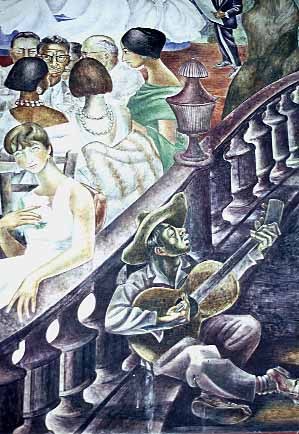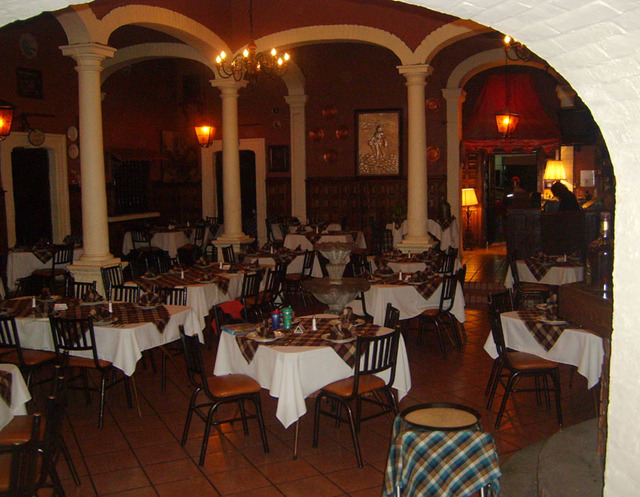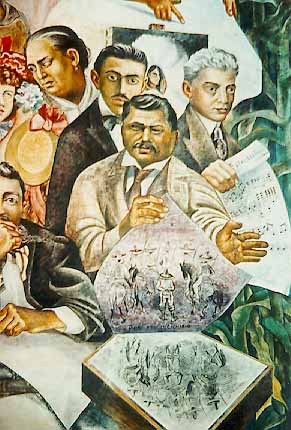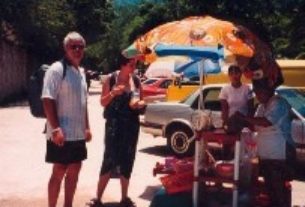The San Marcos Fair, held from the second week in April to the first week of May each year, attracts thousands of visitors from all over Mexico and the United States. It dates back to 1604 when a small indigenous Indian settlement, San Marcos, was founded within walking distance of the growing Spanish city of Aguascalientes. The fair’s religious origins, long forgotten, have given way to a lively, colorful three week spectacular, in which bullfights, folkloric dancing, mechanical games, cockfights, cultural events and merrymaking all compete for visitor’s attentions.

An impressive eighteenth century church overlooks the main arena, the San Marcos Gardens, laid out over a hundred years ago. Protected by pink stone balustrades and graceful wrought-ironwork, thick foliage and tall trees shade romantic paths and fountains, a beautiful setting for this most exciting of fairs. The sounds of birdlife normally heard in the park are replaced by shouting and laughing, earnest conversations between young lovers, spectacular firework displays and the cries of innumerable ambulatory vendors selling everything from delicious chicken enchiladas and the local culinary specialty turkey in rich chocolate mole sauce, to candy floss, giant balloons, ingenious handcrafted toys and cheap souvenirs.
Stop and have your fortune told by a trained and supposedly clairvoyant canary, which selects your future from a deck of fortune cards; sample a meringue, engaging the vendor in the traditional, entertaining “Heads I win, tails you do” system of payment; watch the colorful folkloric dancing; listen to mariachi bands; see Mexico’s top matadors in action at the San Marcos bullring; place your bets on fighting cocks in the modern ‘Casino’ which houses Latin America’s biggest palenque, or indulge in the time-honored tradition of watching or participating in the paseo in which young women walk around the park in one direction, young men in the other.
In recent years a wine pavilion has been set up where the major local producers (and Aguascalientes has grapes in its coat-of-arms) including, naturally, the San Marcos company, vie to press free samples of their best vintages on visitors. The fair is an occasion for superlatives: the oldest, most famous and largest in all of Mexico.

The warm climate and thermal spa waters of Aguascalientes are an attraction at any time of the year and, whenever you visit, the colorful and exciting atmosphere of the San Marcos Fair can be relived by spending a few minutes admiring the mural on the first floor of the architecturally magnificent Government Palace on the main plaza. Painted in 1961 by Oswaldo Barra, a Chilean disciple of Diego Rivera, it shows fairs past and present in their vibrant intensity by vivid use of form and color, a truly memorable tribute to a truly marvellous annual extravaganza.

And a change of pace in Zacatecas
For a change of pace from the San Marcos Fair, it is only 90 minutes drive to the lovely colonial city of Zacatecas, an important mining city built on more hills than Rome. The town of Guadalupe, nowadays little more than an eastern suburb of Zacatecas, houses one of Mexico’s finest religious museums — the Convent of Guadalupe. This is well worth the short detour and, if you are lucky, your guide can be persuaded to show you both the magnificent library and the glorious gilded chapel.
Apart from the innumerable aesthetic and cultural delights of a major city — Zacatecas has such a plethora of museums that they warrant a book in themselves — an hour’s drive south on highway 54, the non-toll road to Guadalajara, is the sprawling archaeological site of Chicomoztoc, or La Quemada (open daily).
This site is very difficult to reach by public transportation, but well worth half a day if you have the time. La Quemada is the largest site so far discovered that was planned and occupied by the somewhat mysterious Chalchihuites culture, which influenced a considerable part of semi-arid Mexico, from Durango in the north to Jalisco in the south. This culture developed permanent settlements and ceremonial centres despite living in an ecological and cultural frontier zone, where climatic changes caused continual shifts in the available resource base, favouring the aggressive, wandering nomads, the Chichimeca. Increasing evidence suggests that minerals mined by the Chalchihuites were widely traded through Meso America, and possibly into the region which is today the southwestern U.S.A..
How to get there, where to stay
The city of Aguascalientes is at the junction of federal Highways 70 and 45, between Zacatecas and León, Guanajuato. It has several excellent hotels. Perhaps the most interesting is the Hotel Francia on the main square, which has an excellent restaurant with an extensive and original menu. The food is superb. The restaurant prices are very reasonable considering the undeniable elegance of its decor and quality of its food. The more modern De Andrea Alameda is also an excellent choice. The hotel Rio Grande on the main plaza, has well appointed and comfortable rooms. The Quinta Real is a businessmen’s favourite with formal gardens, spa and all home-from-home comforts.
Zacatecas also has several excellent hotels. Downtown are the Gallery and the Paraiso Radisson a modernised eighteenth century townhouse. The Quinta Real is a fine modern hotel built around one of the oldest bull-rings in Mexico — unique! Less expensive, but still downtown is the María Benita four blocks from the main square. Drivers unaccustomed to the city may prefer staying at the Aristos on its northern edge, or the Days Inn on its southern edge. For real exclusivity, try the 31 suites (period decor) of the Mesón de Tobito at Jardín Juarez 143.

